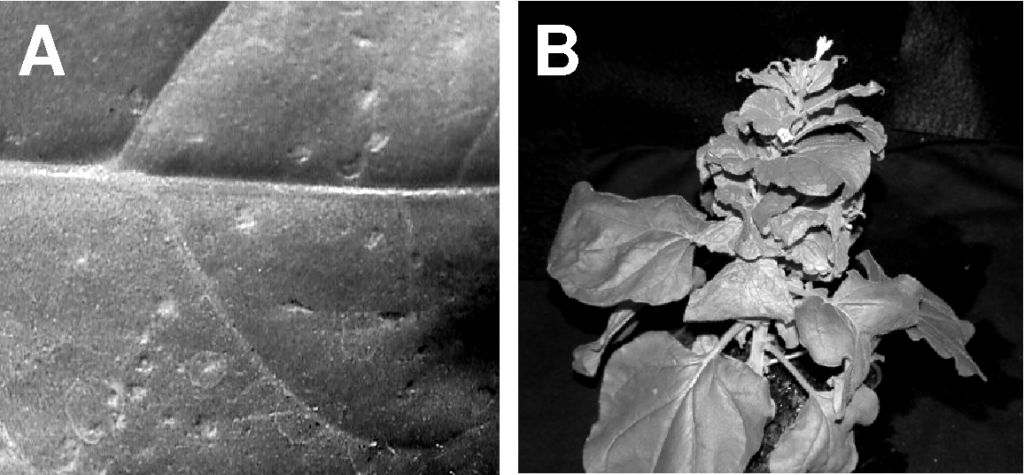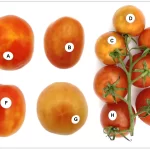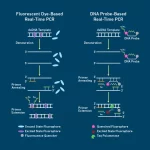What is RNA and Why it Matters to Greenhouses and Indoor Farms
RNA, or ribonucleic acid, is a fundamental molecule in the biology of all living organisms, including plants. It is crucial in translating genetic information from DNA into proteins, which are necessary for the structure, function, and regulation of a plant’s tissues and organs. Accordingly, in plant pathology and greenhouse management, understanding RNA is vital for several reasons, including its role in combating plant diseases and its potential as a tool for effective disease management.

Importance of RNA in Plant Pathology
- Viral Replication: Many plant disease-causing viruses are RNA viruses, which means they have RNA instead of DNA as their genetic material. These viruses hijack the host plant’s cellular machinery to replicate their RNA, leading to disease. Understanding the replication mechanisms of RNA viruses can help develop targeted interventions to prevent or mitigate viruses that cause plant diseases [1].
- Diagnostic Tools: Additionally, RNA-based technologies, such as reverse transcription-polymerase chain reaction (RT-PCR), are used to detect plant pathogens rapidly. These tools can identify the presence of pathogen-specific RNA sequences, enabling early detection and management of diseases [2].
- RNA Interference (RNAi) Mechanisms: Furthermore, RNAi is a natural process cells use to regulate genes and protect against viruses. In plants, RNAi is a primary defense mechanism against viruses and other pathogens. By understanding RNAi, researchers and growers can develop strategies to enhance plant resistance to diseases [3].
See how Healthy Hydroponics detects viable ToBRFV.
Environmental RNA vs. Viable RNA
Understanding the difference between environmental RNA and viable RNA is vital for disease diagnosis and environmental monitoring:
Environmental RNA (eRNA) refers to RNA molecules present in the environment, such as in soil, water, or air. These RNA molecules can originate from various sources, including dead or living organisms. eRNA can be used as a tool for biodiversity assessments and monitoring the presence of specific organisms or pathogens in the environment[4][5]. However, eRNA does not necessarily indicate the presence of live infectious agents, as it can persist in the environment after the organism has died.
Viable RNA is associated with living, active organisms or viruses. Detection of viable RNA indicates the presence of active pathogens in the plant that are capable of causing disease. In the context of plant pathology, distinguishing between environmental RNA and viable RNA is important for accurately assessing the risk of disease transmission and infection [6].

Why RNA is Important for Greenhouses and Indoor Farms
Understanding the difference between viable RNA and environmental RNA (eRNA) is essential for precise disease detection and pathogen management in agriculture. Viable RNA indicates active pathogens capable of causing disease–crucial for timely and effective interventions. In contrast, environmental RNA, although indicating past or present organisms, doesn’t necessarily show an active threat, making it less useful for immediate disease management. This distinction allows growers to target treatments more accurately, optimizing resource use and enhancing crop health.
In summary, RNA plays a critical role in the life cycle of plants and their pathogens, making it a key area of study for managing plant health in greenhouses. Understanding the mechanisms of RNA interference, the replication of RNA viruses, and the use of RNA-based diagnostic tools can help develop effective disease prevention and control strategies. Additionally, distinguishing between environmental RNA and viable RNA is essential for accurate disease diagnostics and environmental monitoring, enabling more targeted and effective interventions for plant pathogen problems.
Disclaimer
The information we present in this blog is based on collating published peer-reviewed scientific literature, and sources we think are reliable. This is by no means an exhaustive review of pathogens. The blog gives a small glimpse of what is known about pathogens. We encourage growers to do more research on the pathogens concerning their crops and hydroponic systems. We are not plant pathologists; thus, the information presented in the blog should not be used as professional advice to treat pathogens or operate your system.
References
[1] https://www.ncbi.nlm.nih.gov/pmc/articles/PMC7184227/
[2] https://www.ncbi.nlm.nih.gov/pmc/articles/PMC8572880/
[3] https://pubmed.ncbi.nlm.nih.gov/29979927/
[4] https://www.ncbi.nlm.nih.gov/pmc/articles/PMC9588027/
[5] https://www.semanticscholar.org/paper/4cb586095602a922050ef6cc150e31b2688f550e
[6] https://www.semanticscholar.org/paper/A-SYSTEM-TO-EXPLORE-TOMATO-SPOTTED-WILT-VIRUS-GENE-Adkins-Lewandowski/fd1c04bafb5374a454c22b8b03f8203153cb663b#extracted
![]()
David Santos is the CMO of Healthy Hydroponics InnoTech




